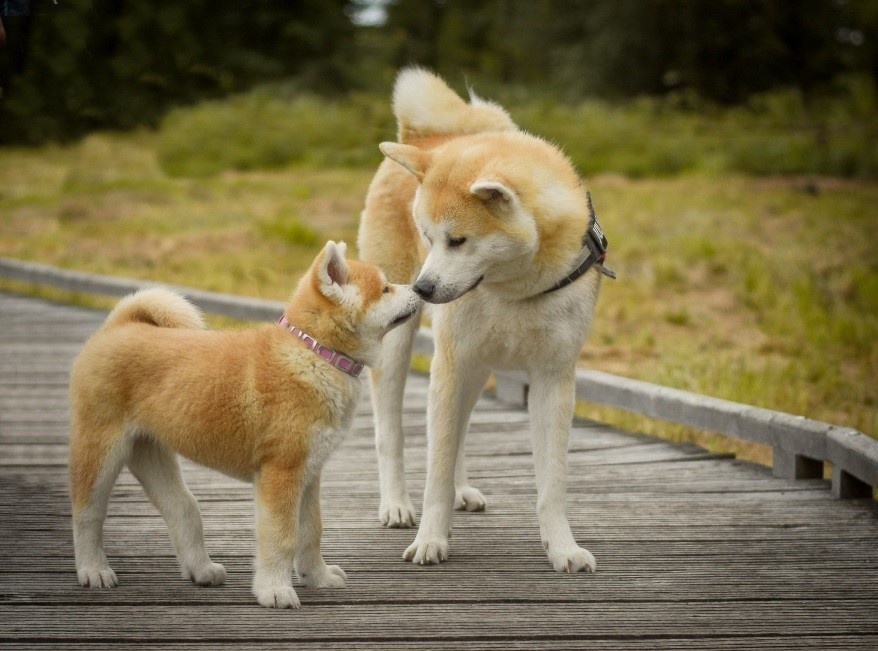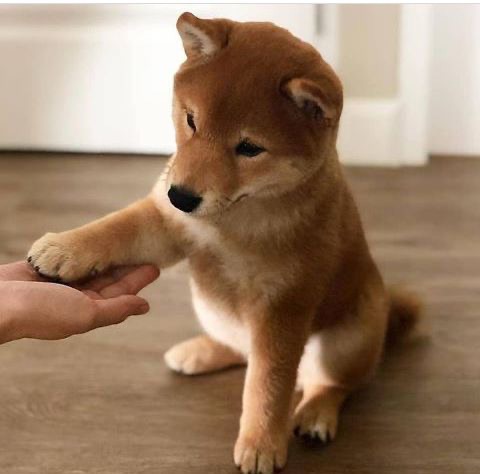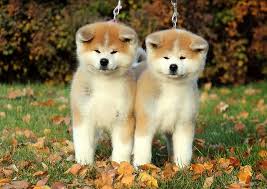Everyone knows the Akita Inu dog. There is probably no one who hasn’t seen the movie about the loyal Hachiko, starring a representative of this breed. These dogs are the pride of Japan.
They have been bred here for thousands of years. Poems are written about them, legends are composed. But you can feel the greatness of this breed only by becoming its owner. The Akita Inu looks quite formidable, but the dog is affectionate with all family members, showing aggression only in justified cases. It can become a family guardian, a loyal friend and companion. In Japan, this breed is considered the best nanny for a child.
сontents
History of the breed
The Japanese Akita Inu dog is a legendary pet in Japan, known to the locals since ancient times. Do not confuse the Japanese Akita with the American Akita – they are different dogs. The Japanese Akita Inu originated in northern Japan in the Akita province, which is how the dogs got their name. It is not known for certain when these animals were formed as a breed, but the first written evidence dates back to the early 17th century. In those distant times, the Akita Inu was used to protect the imperial family.
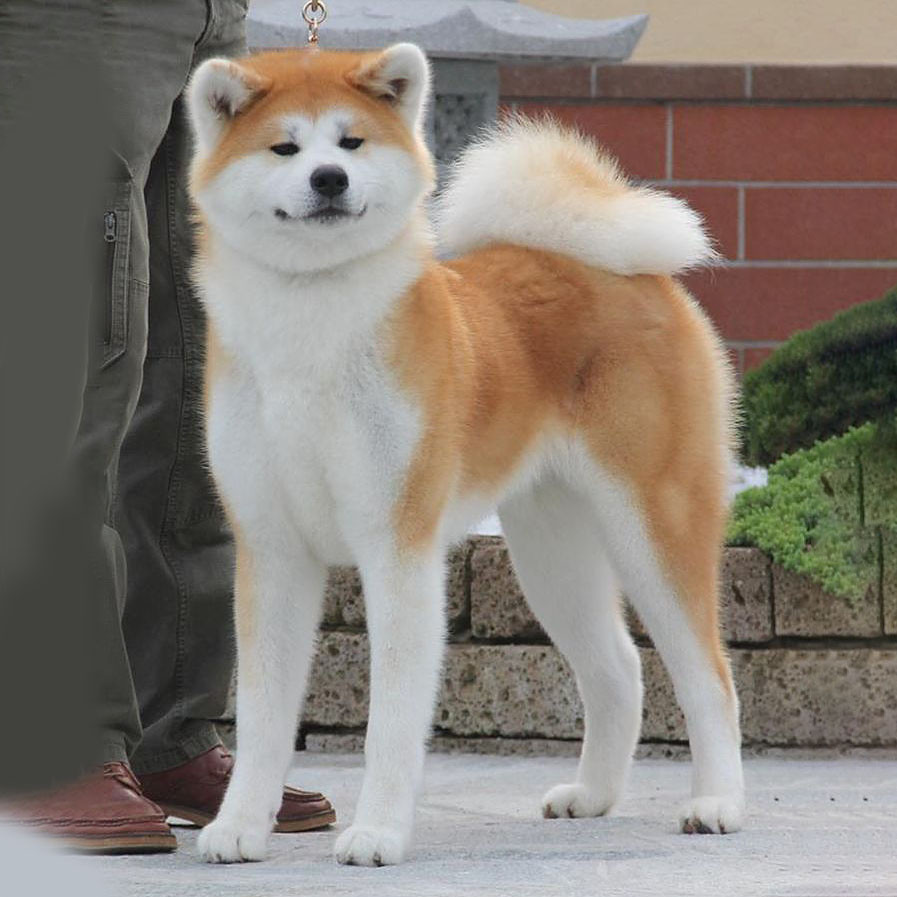
In addition, members of the imperial family loved to hunt small and large game with these dogs – it’s hard to believe, but they even hunted a bear with them. This characterizes the animal’s personality very vividly, because the Akita has a brave and at the same time good-natured character. To understand the kindness of these dogs, we can cite a vivid example: in the London Zoo, a baby Akita Inu was once used as a big brother nurse for a tiger cub. And the dog coped with this task perfectly.
The first Akita Inu came to America in 1937, along with a prominent deaf-blind woman of her time, Helen Keller. Helen came up with the idea after visiting the statue of the dog Hachiko in Shibuya. After hearing about the extraordinary loyalty of this animal, as well as the history of these dogs in general, Helen decided to take one Akita with her. Her name was Kamikaze-go.
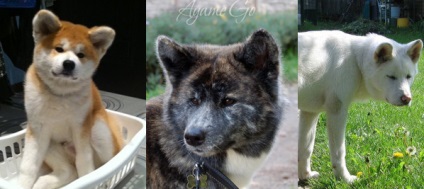
Akita Inu suffered serious damage during the Second World War – these dogs almost disappeared. They suffered from hunger, became victims of people who barely survived, and their skins were used for clothing. Toward the end of the war, a government decree was issued to exterminate all dogs unsuitable for military use, as a real rabies epidemic had begun in Japan. For this reason, breeders hid some representatives of the breed in remote settlements, breeding them with matagi-inu. Fanciers also bred hybrid generations of Akita with German Shepherds to adapt them for military service.
After the war, a new round of restoration of the Akita Inu breed began, with Morie Sawataishi making the greatest contribution to it, and it is thanks to him that these unique dogs have survived to this day. Purebreds had to be collected all over the country, but it paid off. The American military liked the charming and proud Akita, so the breed was brought to the United States.
In the postwar period, American servicemen brought these dogs home from Japan, and a separate breed, the American Akita, was formed. However, there is still a dispute among breeders about the difference between the Japanese and American Akita Inu breeds, as the Japanese do not want to recognize American dogs as a separate breed. Moreover, many adhere to this rule even today, despite the fact that the dispute has been going on for more than half a century.
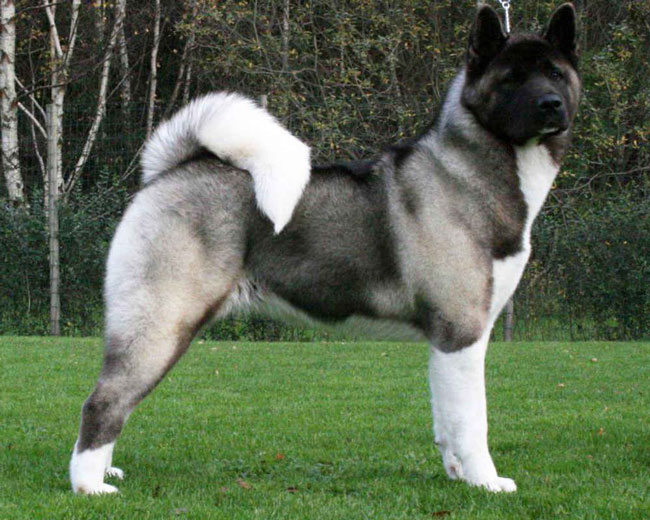
Description.
The Japanese Akita Inu is a medium to large dog with a powerful build, large muscles, and a round head. The ears are erect. The limbs are muscular, medium length, with a fluffy, bagel-like tail. The coat is long. Only a few color variants are recognized. The coat must be short, with a white mask on the muzzle.
The variant from the United States is called the Great Japanese Dog or American Akita. These are exceptionally large dogs with a heavy bear-like head. They recognize almost any color variant, including black or with a dark mask.
Interesting fact – Akita Inu has a specific structure of the mouth, it seems that the dog is constantly smiling.
Features of the breed
The dog is most comfortable in countries with cold or temperate climates. Distinctive features of this breed are:
- massive head,
- erect triangular ears,
- tail with a “bagel” shape.
An adult Akita Inu boy is 66-71 cm tall, and a girl is 61-66 cm tall.
The average weight of a boy is 45-59 kg, a girl 32-45 kg.
Girls traditionally have a longer body.
Dogs grow slowly; a fully developed Akita Inu is considered to be 3 years old.
- At six months of age, dogs clearly show the features characteristic of an adult.
- At one year of age, girls begin to heat, but they are not yet adults, which means they cannot be mated.
- For 1-2 years, growth is significantly slowed down, the body is transformed in the head area.
- At the age of 2, the dog stops growing in height, but minimal changes continue for another year.
Interesting fact – Before the bombing of Hiroshima and Nagasaki, Akita Inu lived for 14-15 years, but radiation left a mark on the breed forever. Now these beautiful dogs live no more than 10-12 years.
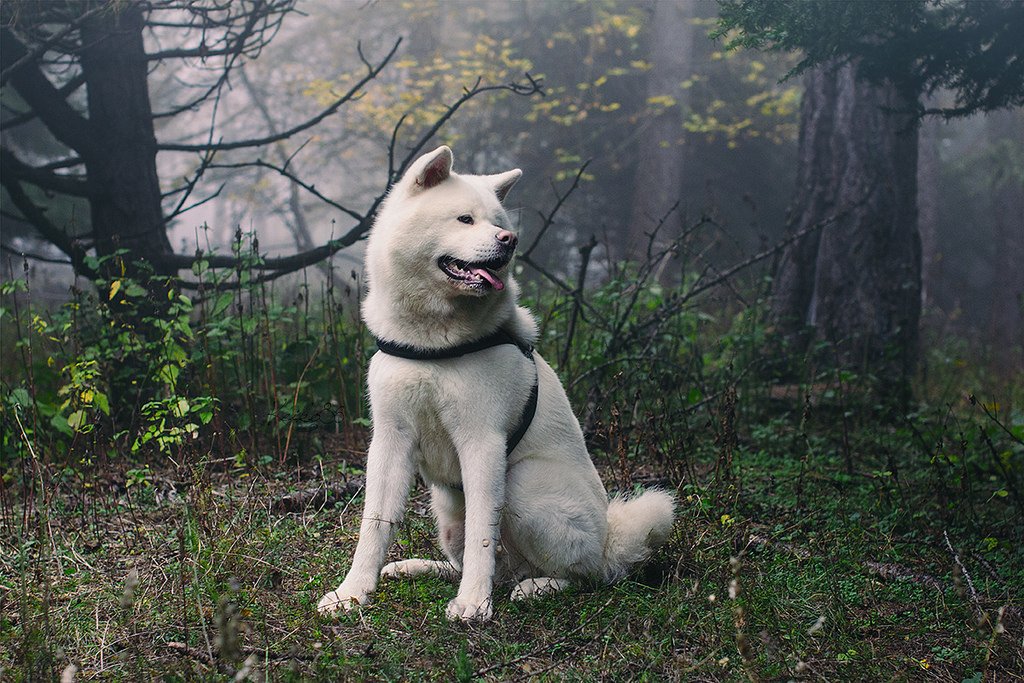
Coat. The classical standard is a dense, short coat (about 5 cm) that is slightly longer on the neck and tail. The coat is erect, made of coarse hair and needle hair, and the undercoat is very thick and fluffy. Akita Inu can only have this color:
- pure white;
- red with white fragments and a mask (urajiro);
- tiger, also with urajiro;
- red with black hair tips (sesame).
The American Akita can be of any color. Long-haired dogs are often born as a result of a combination of recessive genes from the father and mother. They are the same by nature, but they do not fit into the standard, so they are considered a cull.
Ears. Puppies have their ears down, and adult dogs have their ears standing up, facing forward and slightly to the sides. They do not take this position immediately, and two factors influence this:
- age – only as they grow older and strengthen their special muscles will their ears begin to rise. Chewing and gnawing on toys can speed up this process;
- change of teeth – until permanent teeth appear in place of milk teeth, the ears will not fully rise.
It often happens that they fall back or only one ear is erect. This process takes from 10 weeks to 6 months, so you shouldn’t worry until six months – the position of the ears will be leveled.
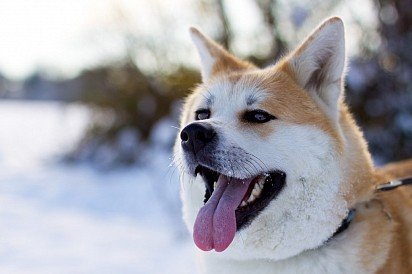
Eyes.The eyes are brown (preferably as dark as possible), small, set deeply. They have a triangular “oriental” shape that is noticeable from birth. In light-colored dogs, black “eyeliner” is allowed, which only emphasizes the special cut.
The tail. In purebred dogs, it is fluffy, thick, and curled into a tight ring. Babies have a straight tail that curls in the first 2 months of life. If the dog is sleeping or just relaxing, it can unwind slightly, but it never becomes straight. Visually and to the touch, this part of the body does not change even during the molting period. The fluffy tail seems to balance the cat’s large head.
Paws. The description of the paws differs slightly for different standards: straight, vaulted, with thick pads, similar to those of a cat. In both varieties of Akita, the fingers are tightly closed, which makes it possible for them to swim well. At the same time, not only the front but also the hind limbs are involved. However, most dogs of this breed do not like to swim, entering the water only when absolutely necessary.
Breed standard.
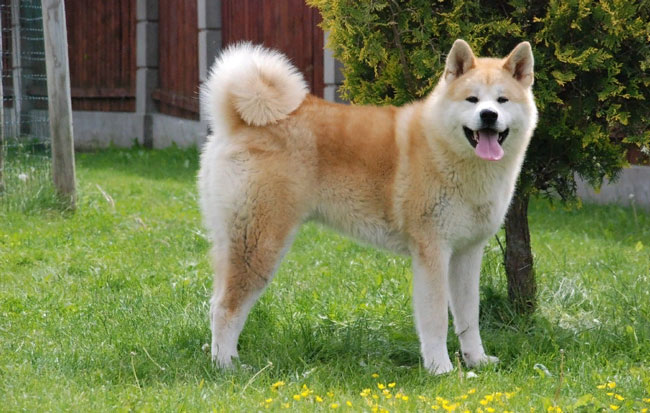
The Akita Inu’s entire appearance is full of nobility and power. Its refined appearance is harmoniously combined with a dense physique; this dog commands respect. The Akita’s exterior is so original that it can be compared to a bear, a fox, and a wolf. The dog simultaneously resembles these animals, and this resemblance is facilitated by small ears, small eyes, and a hollow between them that extends far into the broad forehead.
The Japanese dog belongs to the spitz-like breeds and is considered the largest representative of this family. The height of adults is 62-68 cm with a weight of 40-50 kg.
On a short, thick, muscular neck is a large, slightly blunt head with a flat skull. The erect, triangular-shaped ears are slightly rounded at the ends, with a slight slope toward the eyes. They are quite small against the background of the voluminous head. The eyes are dark brown, small, not convex.
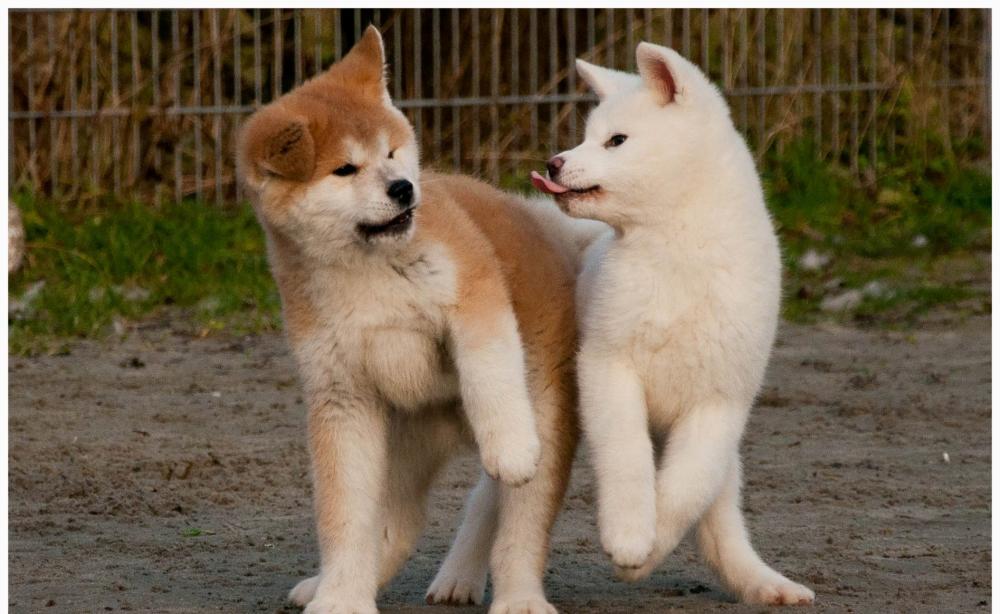
The build is large and heavy. The back is straight, with slight wrinkles on the skin. Well-developed, deep, wide chest. The front legs are straight, powerful, and the hind legs are strong, muscular. The large and fluffy tail is slightly curled and thrown back.
According to the standard, the coat should consist of three layers:
- The top layer is the coarsest and longest hair.
- The middle layer is hard, not as long as the top hair.
- The bottom layer (undercoat) is thick and soft.
Too short and too long hair is excluded.
Whatever the color, it must be clear and clean. Spots are allowed only with a clear outline. The undercoat may be slightly different in color from the coat. The following colors are allowed:
- Tiger – white, black, or red may be present.
- Red – complemented by white spots.
- White – no spots on the coat are allowed.
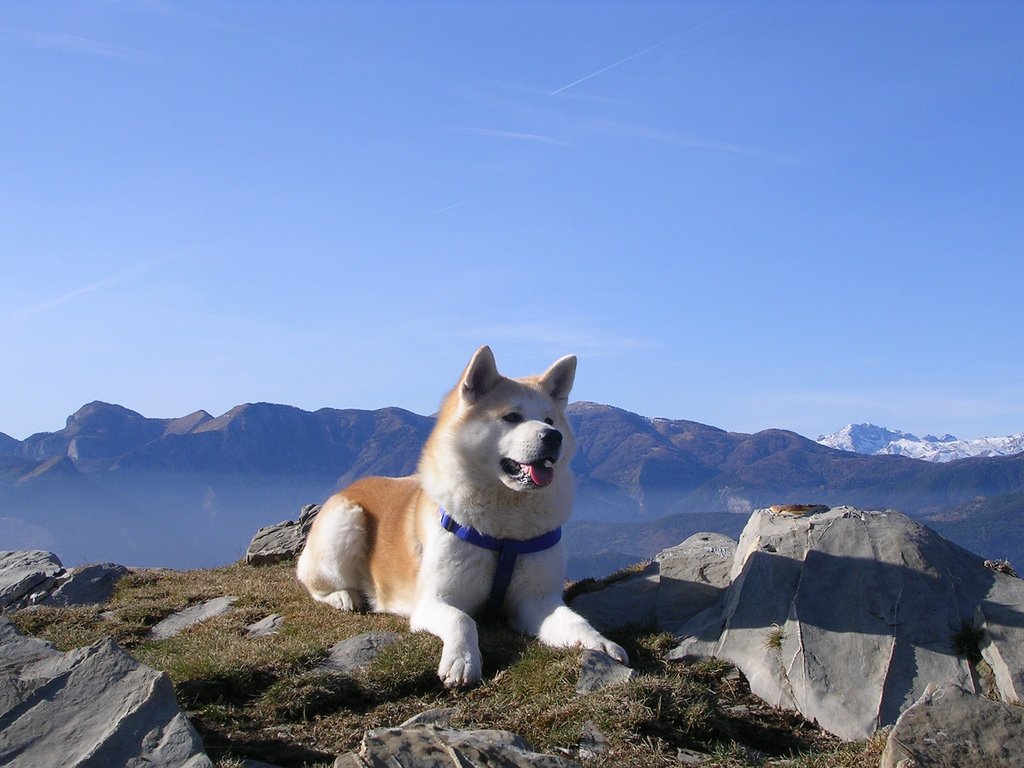
Character of the Akita Inu
It is difficult to briefly describe the character of this breed. Akitas are very versatile dogs. The American subspecies is characterized by more serious habits, while the Japanese are somewhat more playful and frivolous. At the same time, most representatives of the breed are not stupid couch pets or overly gloomy dogs. There are several main character traits.
- Independent thinking – it is often mistaken for stubbornness, but in fact, it is enough to establish mutual understanding.
- A hierarchical sense – very strongly developed, so they try to establish a rank in relation to other dogs of the owner. It is important to get the human to recognize the dog as the leader within the first weeks and months of its life, otherwise it will dominate.
- Ability to learn – Akita Inu dogs quickly grasp new knowledge and skills, so they get bored if they have to repeat the same thing for a long time. It is very important for them to understand why they need to perform certain tasks, so you should take care to develop the right motivation.
- Lack of fear of heights – it is worth fencing off the balcony and other dangerous places, because puppies are very brave and not very smart. Adult dogs jump high, not caring much about the place of landing.
- Craving for space – they like to run a lot, play in nature, and visit new places. Physical activity is vital for them.
- Tenderness – these dogs are mentally very sensitive and easy to offend.
- Loyalty to the owner – the Akita will not cling to and interfere with everyday activities, rest, but they are very faithful creatures. They like to follow their owner quietly everywhere.
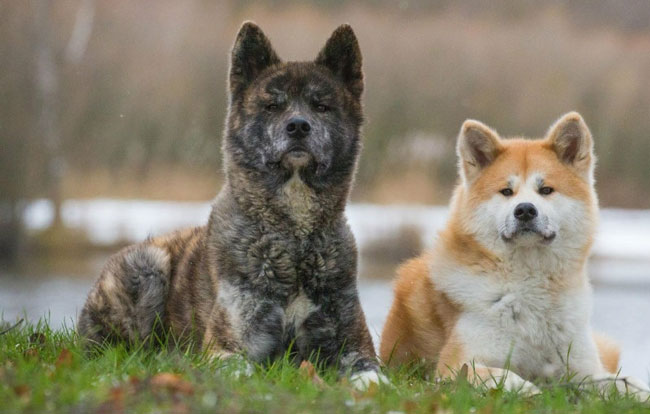
- Patience – despite being dominant, a properly trained dog is incredibly patient. He will modestly wait for you to come home from work or sit quietly by the bed, waiting for you to wake up.
- Attitude to other people – Akita gets along well with older people. Its attitude towards children depends on their behavior and family affiliation.
- Attitude towards dogs – if the other dog is smaller and lives in the same family, friendship is likely to be possible. Relationships with members of their own species and of the same sex, completely strange dogs, are difficult. Aggression (at least in the form of growling) is especially active if the other pet is of the same or larger size.
- Fear of cramped spaces – Akita Inu dogs do not like too tight enclosed spaces. They try to get a good view and control over the space.
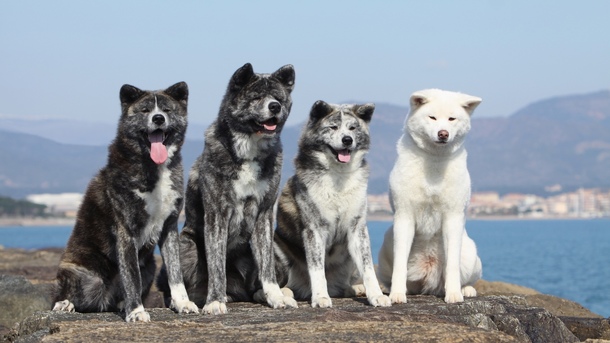
- Aggression – these dogs are very sensitive to the relationship between guest and owner. Welcome visitors should not worry. These dogs do not like strangers, so they will watch the guest closely until they understand how appropriate their presence is in the house. Only proper training will help to control innate aggression.
- Guards – they are good guards, but they do not immediately bite. For example, they will try not to let a thief out of the house, waiting for the owner’s help.
- Barkers are fairly quiet dogs, but they are very sensitive to new people, animals, and sounds, so they can use their voices to warn someone who invades their territory. But, in fairness, we should also note the Akita’s ability to make other sounds that are completely different from the usual dog bark. It can be snorting, grunting, moaning, and loud sniffling. Taken together, it resembles muttering under your breath. If you watch from the outside, you may think that the dog is talking to itself.
Akita Inu puppies.
You can buy a truly purebred Akita Inu in dog breeding clubs. Before buying, you should study the pedigree and find out if the dog has been vaccinated. You should also ask about the reputation of the kennel.
If you need a show-class representative, you should know that the best individuals are born in small litters from parents with a pedigree. Such puppies rarely have hereditary problems and allergies.
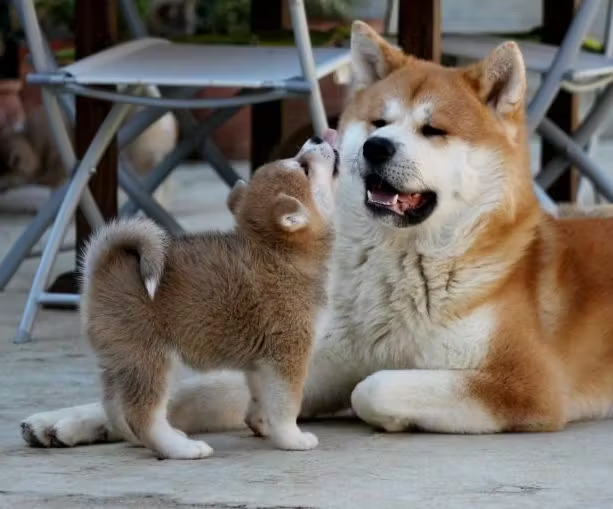
How to choose a puppy.
You can buy purebred puppies only from large, reliable breeders. The main signs of a healthy Akita Inu puppy are:
- agile and cheerful;
- a puppy of medium weight;
- beautiful shiny coat;
- runs confidently, stands firmly on its paws;
- not aggressive, not afraid of loud noises.
Pay attention to the color and shape of the Akita Inu’s eyes – if they are round and light, this is not a purebred pet. The peculiarities of the eye section are necessarily congenital, and the color changes with age only to lighter. The bite should be correct, and the pigmentation of the nose and mouth should be uniform.
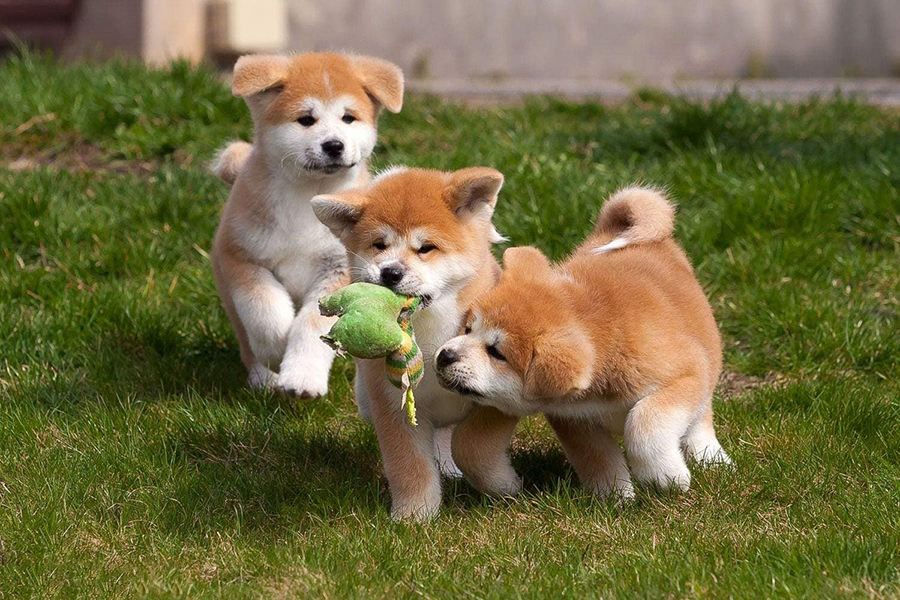
If you buy a puppy over six months old and its tail hasn’t yet curled, it’s a bad sign. If you plan to participate in competitions and exhibitions, it is better to choose a puppy with an experienced dog handler. When buying an ordinary pet, it is enough to use the above criteria.
How much does an Akita Inu cost?
The standard cost of a purebred Akita Inu puppy starts at $250-300. The price varies depending on:
- color, for example, sesame puppies are a real rarity;
- pedigree – eminent parents will increase the total amount;
- kennel – the cost differs slightly from one breeder to another;
- compliance with the standard – puppies that cannot participate in competitions, for example, with long hair, will be cheaper.
Akita Inu mating (breeding).
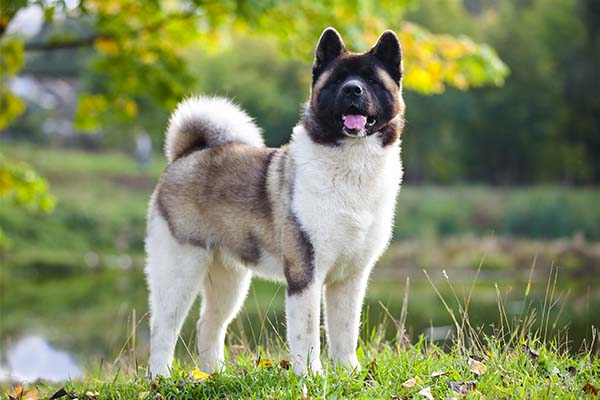
The dog’s formation occurs only after the age of two, while bitches can be mated after 1 year and males from 10 months.
Approximately 4 weeks before mating, the bitch is taken to the veterinarian to rule out possible health problems. It is important that the dog has had all the necessary vaccinations before pregnancy; it is forbidden to vaccinate the dog a month before mating. The same applies to the male, he must have all the vaccinations.
Only interested dogs are mated, and the pets should be allowed to get to know each other before mating. Dogs are mated on the territory of the male, but the day before the mating, she must be introduced to the territory and her partner.
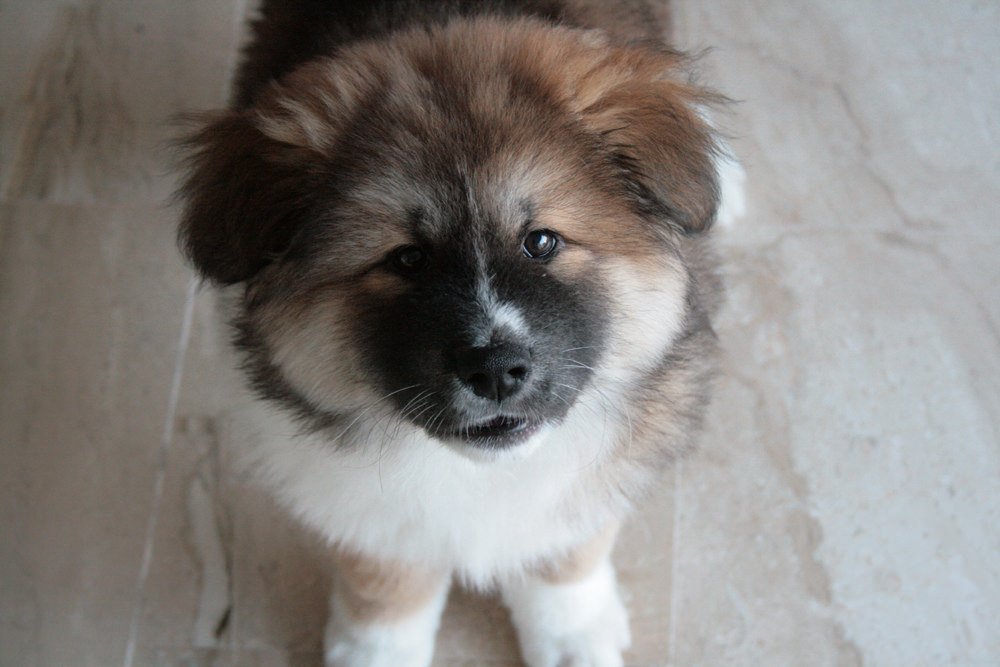
The dogs are mated in two stages: the first is the main mating, and the next day is the second.
Akita Inu is considered one of the most purebred breeds. Japan strictly controls the breeding of dogs all over the world. The main difficulty in breeding Akita Inu is the selection of a partner; it should be borne in mind that all the weaknesses of the bitch should be covered by the strengths of the dog. When mating, the breed standard, age, height, health, pedigree, and titles are taken into account.
An interesting fact is that a young female should be mated with an experienced dog, and a young male should be mated with an experienced bitch. If both dogs have the first mating in their lives, it will be stressful for them and nothing good will come of it.
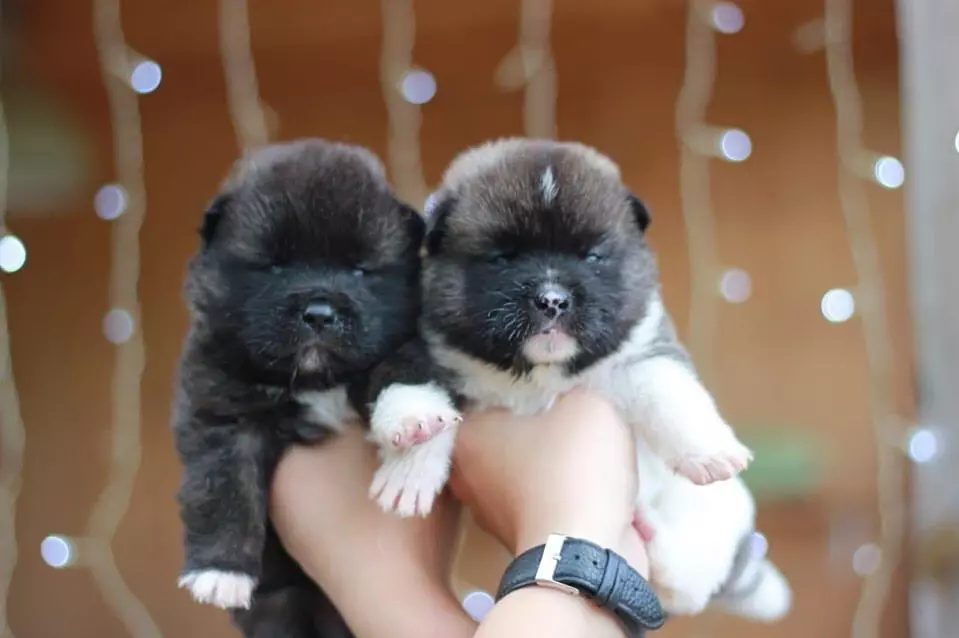
Housing and care
Akita Inu gets along well both in an apartment and in an aviary. Each housing option has its own rules and nuances that the owner should pay attention to:
- When deciding to keep a Japanese dog in an apartment, soberly assess the size of the room. It’s unlikely that a large dog will feel comfortable in a cramped studio apartment, and it will be difficult for the household. An apartment with a sufficiently large area or a private house is suitable for keeping an Akita. When kept in an apartment, the pet should be provided with daily walks. Twice a day, the dog should walk for at least 40 minutes. Physical activity is necessary: running, jumping, active games.
- The ideal option for keeping an Akita is a private yard fenced with a high, secure fence. Naturally, the yard should have a spacious open enclosure with a warm kennel. When kept in an aviary, the dog should be allowed to run around the yard or go for walks outside the private territory every day. Akita cannot be left alone for long periods of time. While in an apartment he has the opportunity to communicate closely and often with the household, in an enclosure the dog will get bored. Therefore, it should not be deprived of human contact for a long time.
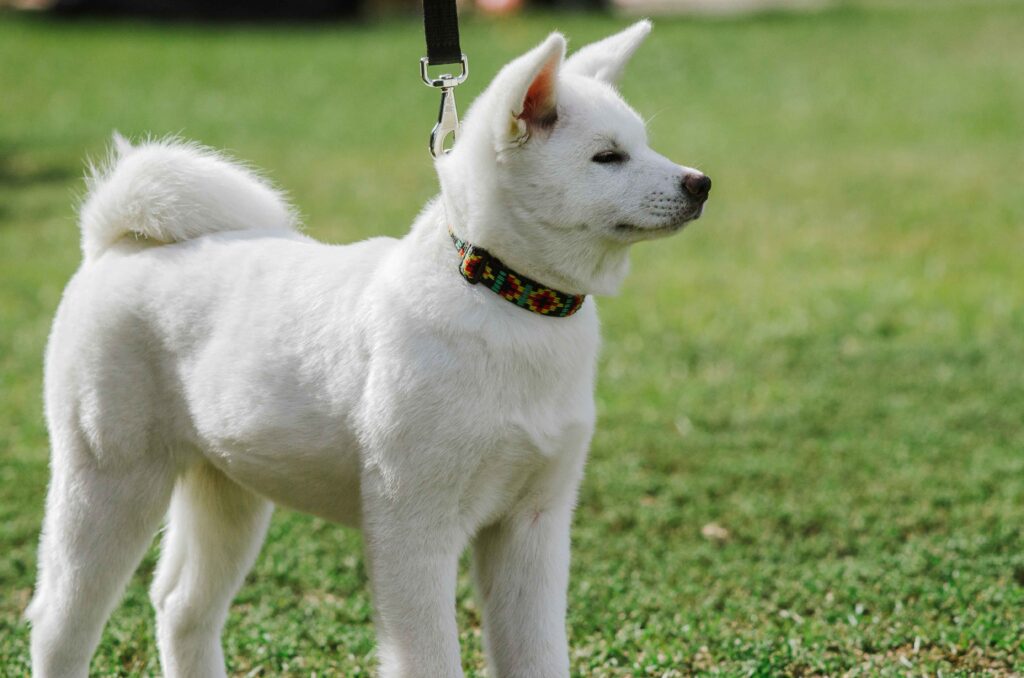
Akita Inu is easy to care for.
- It is enough to brush the pet every week. When the dog is actively shedding, which happens twice a year, it should be brushed daily. The dog may shed more often if the house is warm and dry or the pet is not fed properly. Akita Inu does not need to be clipped or trimmed.
- The dog is bathed once every six months. Frequent water procedures wash away grease from the coat. Japanese dogs are clean, they lick themselves well, and the remnants of dirt are combed out.
- Teeth are brushed every 2 weeks, using special toothpastes or giving the pet chewy treats.
- Every 7 days, the ears and eyes are examined and cleaned with special preparations. If discharge is observed, this is a reason to immediately consult a veterinarian.
- Claws are trimmed monthly if they do not grind themselves.
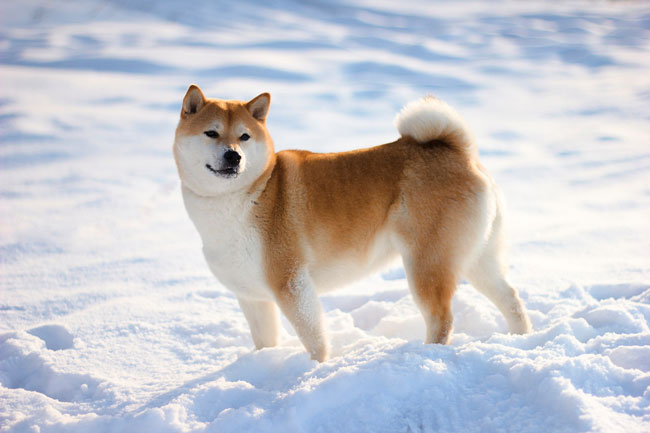
An interesting fact is that all procedures should be performed from an early age so that the dog takes them for granted. Attempts to accustom an adult dog to new unpleasant procedures will result in stress, resentment, and distrust.
Training and education
Dogs of this breed get along well with people. Both small puppies and adult dogs require a lot of attention from people. Akita Inu dogs are intelligent, curious, but sometimes stubborn and disobedient. Akita owners will have to spend a lot of time and effort to train them.
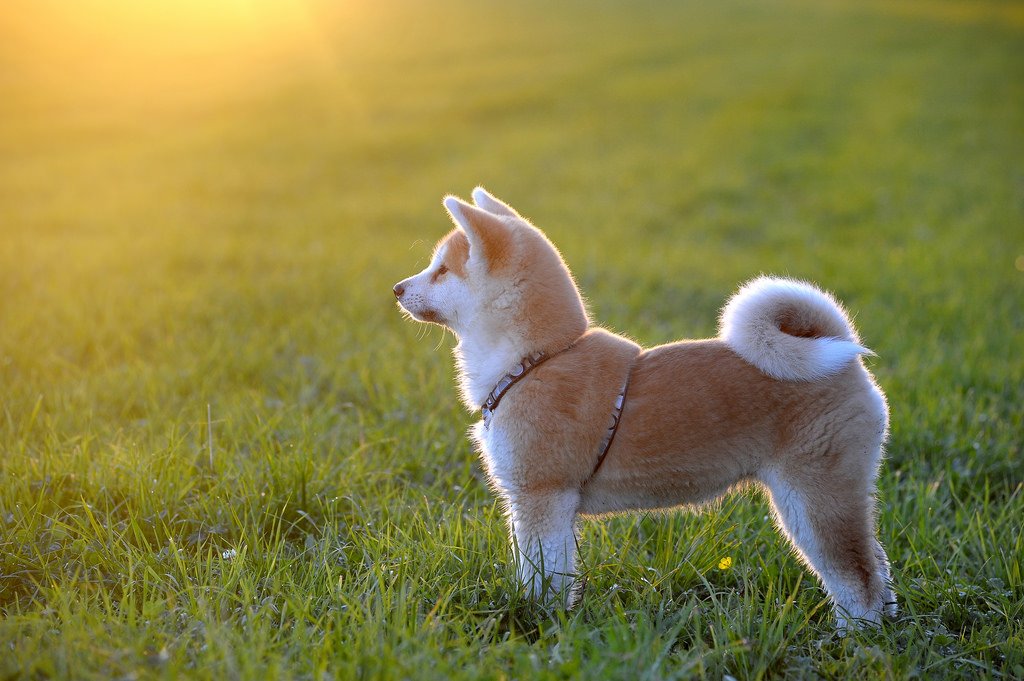
Akita Inu regularly demonstrate their character. Dogs demonstrate independence and demand respect for themselves. If the owners are serious about raising the dog, they need to be patient and persistent. The dog needs to be shown who is in charge in the house; from an early age, the puppy must know that there are boundaries. If a person shows weakness, the dog will try to dominate and start showing stubbornness.
If you are serious about training Akita Inu dogs, you can teach them to hunt, walk on their hind legs, and even perform complex acrobatic tricks. The main thing in training is to be persistent and pamper the dog with treats for every exercise that is done correctly. Akita will be happy to accompany the owner for a run or hunt, and then rest with him.
It is worth noting that if you do decide to get an Akita Inu dog, you should first talk to the owners of these dogs and learn their behavioral characteristics and habits.
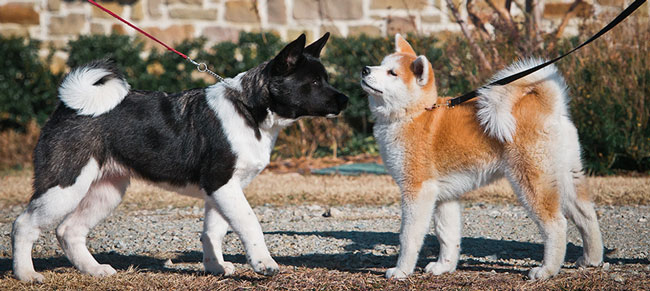
- The Japanese dog loves to chase other animals, even in tight quarters.
- It is not recommended to look directly into the eyes of an Akita for a long time, as this can be perceived as aggression on the part of a person, especially if it is a stranger.
- It is better to enlist the help of an experienced dog handler for training.
- An Akita is called a puppy until the age of two.
- The Akita Inu is a favorite breed of Japanese samurai, who believe that these dogs are worthy of being their reflection.
- During hunting, the Akita Inu behaves like a tiger. It stalks its prey in complete silence, presses its body to the ground, and attacks at the right moment without barking or growling.
Nutrition.
The Akita Inu’s diet should be varied, balanced, and healthy. The dog can be fed dry food or natural food. They are not picky eaters, so they eat food or natural food equally well.
A serving of natural food includes:
- cereals, most often rice,
- Lean meat, poultry, rabbit, lamb,
- vegetables, always heat-treated.
In addition to cereals, vegetables, and meat, the diet of dogs of this breed should also include
- seafood
- eggs
- milk, and cheese.
Dogs should be fed vitamin complexes. Adult dogs can be fed dry or wet food, because it is impossible to ensure that all useful trace elements and vitamins are present in a natural diet.
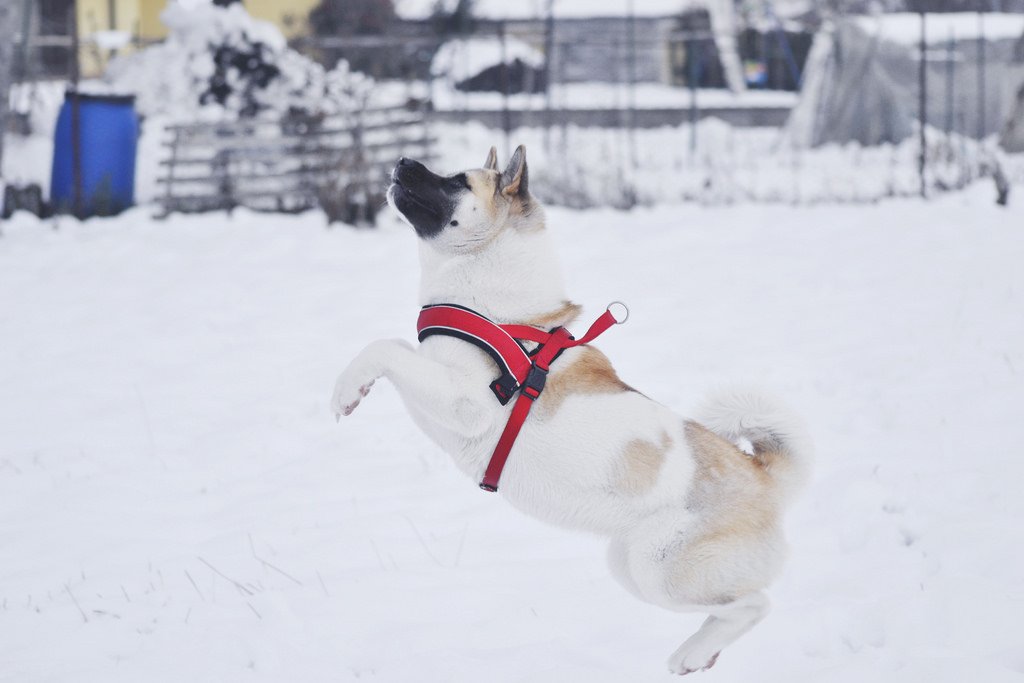
You can also choose foods based on rice, vegetables, and fish for this breed, but in no case should you choose foods based on corn, wheat, meat, or other products. It is worth noting that dogs of this breed should not be overfed, as they are prone to obesity.
It is strictly forbidden to give the dog
- sweets
- salty foods
- smoked and spicy foods.
Small puppies should be fed up to 6 times a day, and when they get older, they should be gradually switched to two meals a day.
Health and diseases
Akita Inu is characterized by good health, provided that the dog has no congenital pathologies. Representatives of this breed can often suffer from genetic diseases or be sensitive to certain medications.
Most often, Japanese dogs suffer from the following diseases:
- Hip dysplasia, a hereditary disease.
- Intestinal distention, usually caused by malnutrition.
- Retinal atrophy.
- Hypothyroidism is a disease of the thyroid gland. It is believed to be responsible for conditions such as epilepsy, alopecia (hair loss), obesity, lethargy, hyperpigmentation, pyoderma, and other skin diseases.
- Pseudoparalytic myasthenia gravis, a disease that causes weakness of all muscles in the body.
- Sebaceous adenitis, this disease often looks like an allergy, but in fact it is much more serious, the sebaceous glands in the dog’s skin become inflamed, which leads to their destruction.
Most diseases can be prevented with regular visits to the veterinarian. Given that a dog may be allergic to certain medications, you should never treat your pet on your own or visit an inexperienced veterinarian.
To protect your dog from viral infections, you need to vaccinate it. After the vaccine is administered, the dog is quarantined for two weeks to prevent the infection from invading, as the immune system is severely weakened during this period.
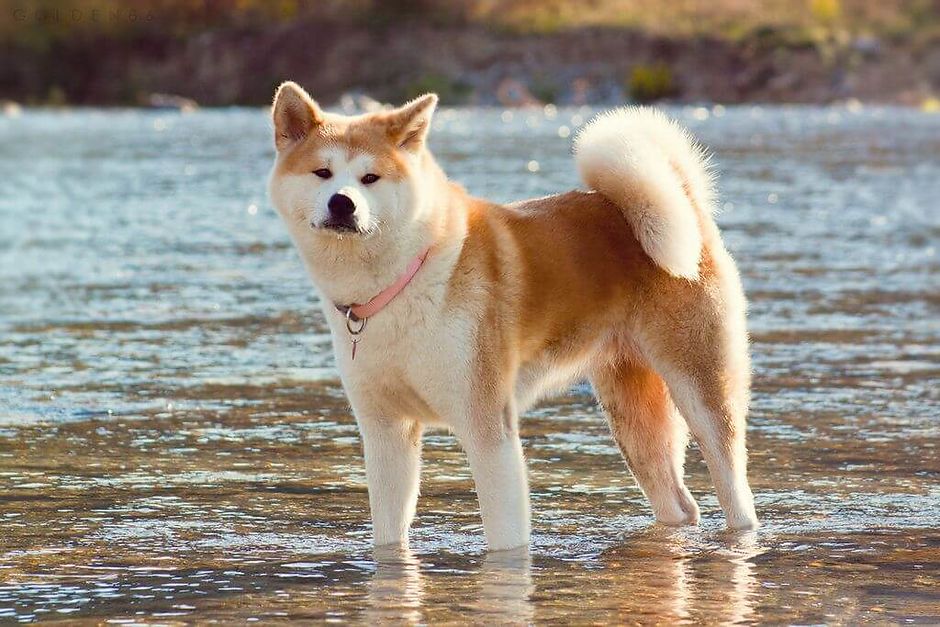
Pros and cons of the breed
When you see a beautiful Akita Inu dog in a picture, don’t rush to buy a puppy. First, weigh all the advantages and disadvantages of this type of dog and assess your capabilities in terms of keeping a pet.
Advantages:
- Fearlessness.
- Security and guarding qualities.
- Ability to learn.
- Cleanliness.
- Absence of a specific odor.
- Silence, does not bark for no reason.
- Loyalty.
- Love for children.
- Longevity.
- Suitable for both apartment and aviary keeping.
- Not expensive care.
- Rarely gets sick.
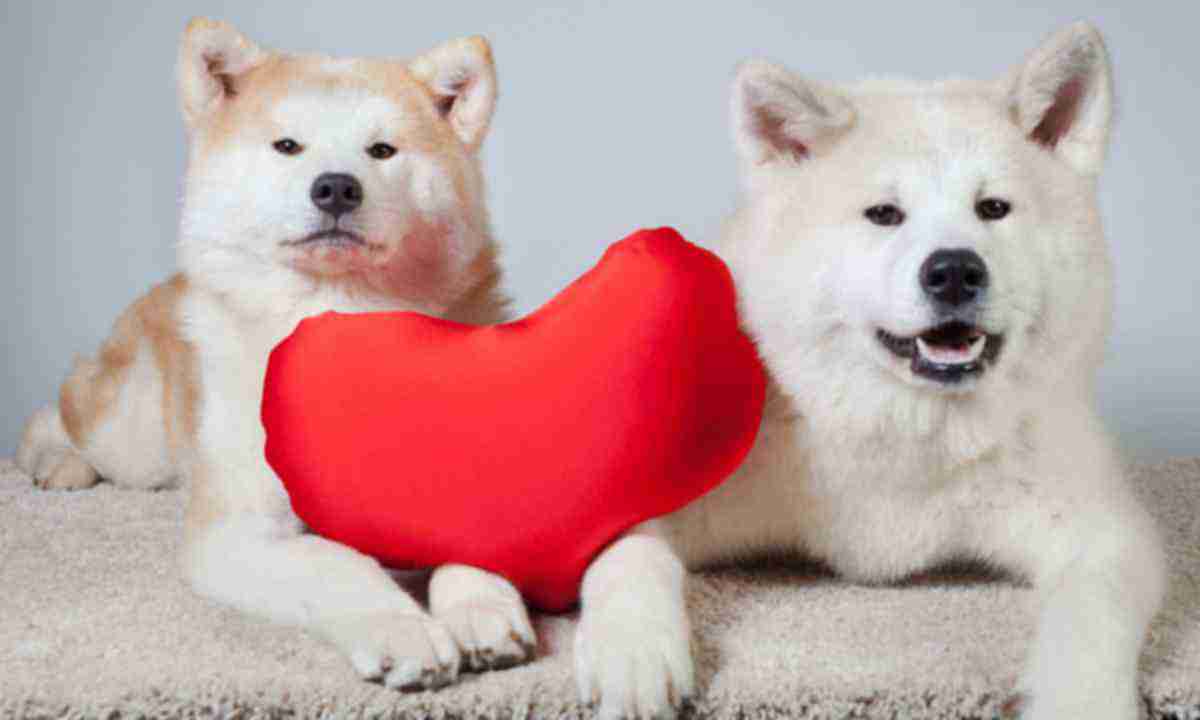
Cons:
- Due to stubbornness, the training process is long.
- Aggressive to other dogs.
- Abundant shedding.
- Does not tolerate heat.
- Should not be left alone for a long time.
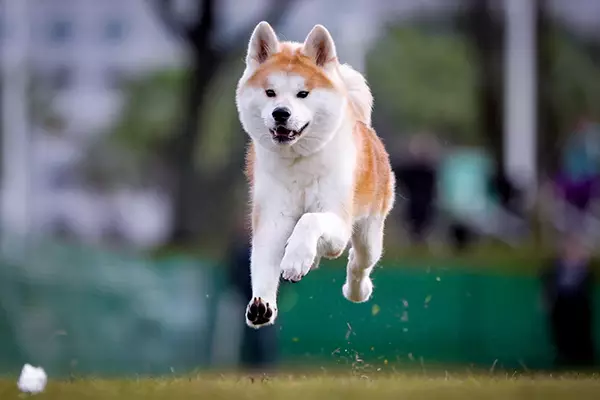
Akita Inu are faithful companions of their owners, as Hachiko’s story confirms. Representatives of this breed are independent, sometimes stubborn, but they are always ready to rush to the defense of their family.
With proper upbringing and care, the dog will give endless love and devotion.


